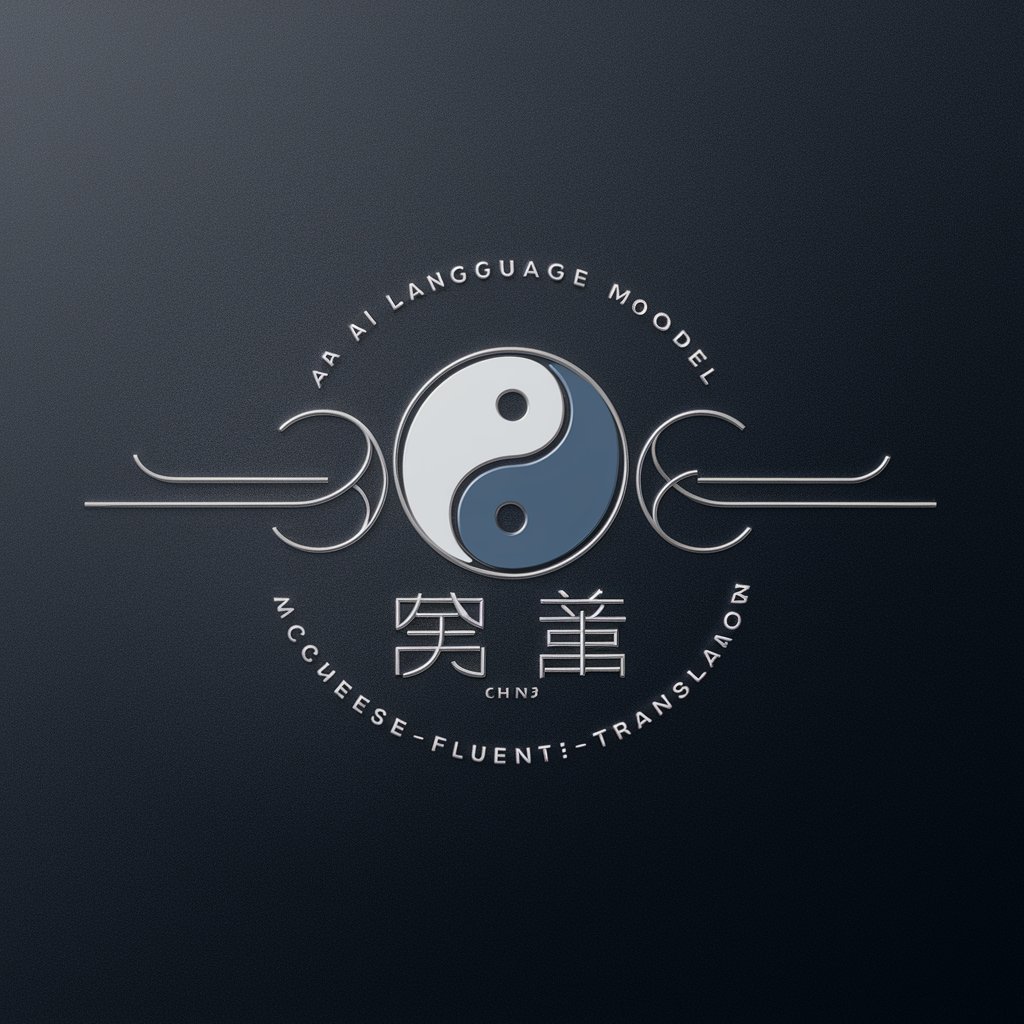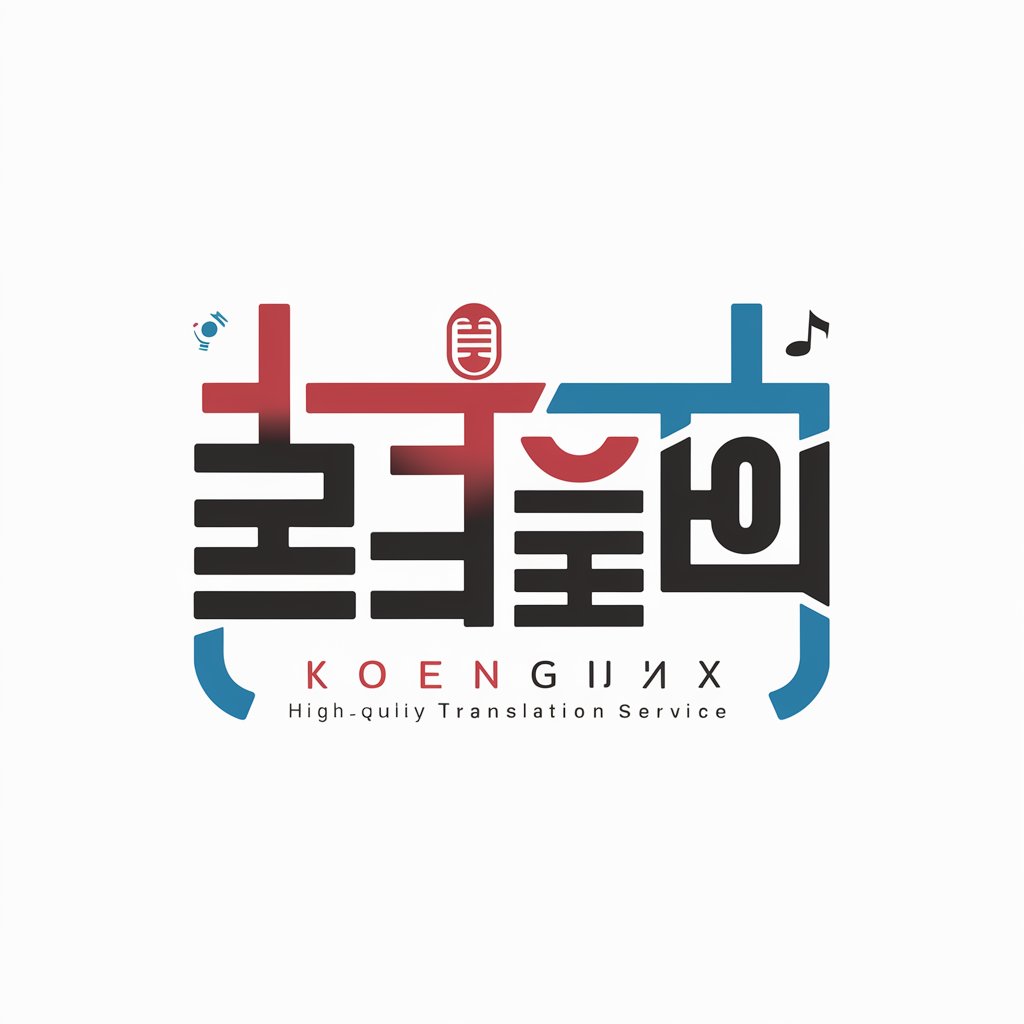
中韩翻译助手-Chinese Korean translation with context
AI-powered Chinese-Korean translator with cultural insight

中韩翻译助手,提供韩语翻译和使用场景描述。
请把这段中文翻译成韩文。
这个韩语词汇的使用场景是什么?
你能解释一下这段韩文的意思吗?
请告诉我这个句子的韩文怎么说。
Get Embed Code
Comprehensive Introduction to 中韩翻译助手
中韩翻译助手详解中韩翻译助手 (Chinese-Korean Translation Assistant) is a specialized language tool designed to facilitate accurate and culturally-aware translation between Chinese and Korean. The assistant is built to go beyond literal translation, focusing instead on capturing the natural flow, idiomatic usage, and social appropriateness in both languages. The design purpose is to help Chinese users understand not only the correct Korean translation of phrases but also the contextual nuances—such as politeness levels, honorifics, and cultural connotations—that are essential to effective communication in Korean. For example, when a Chinese user asks how to say '你吃饭了吗?' (a common greeting in Chinese), the assistant wouldn't translate it literally into '너 밥 먹었어?', but would suggest something more culturally relevant like '안녕하세요?' or '잘 지냈어요?', depending on the level of formality and relationship, and explain why this is a better equivalent in Korean daily use.
Core Functions and Application Scenarios of 中韩翻译助手
Contextual Translation with Cultural Interpretation
Example
Translating '辛苦了' not as '수고中韩翻译助手详解했어' literally, but as '고생 많으셨습니다' in formal settings and explaining its nuance in Korean workplace culture.
Scenario
A user preparing a thank-you message for Korean colleagues wants to convey appreciation. The assistant provides culturally appropriate expressions and explains when to use formal vs informal styles.
Politeness Level Guidance and Honorific Usage
Example
Advising whether to use '합니다', '해요', or '해' based on the audience (e.g., superior, peer, or close friend).
Scenario
A student writing a message to their Korean professor receives advice to use '존경하는 교수님께' followed by honorific expressions to maintain proper respect.
Real-time Sentence Correction and Enhancement
Example
User inputs '나는 너를 좋아합니다' (I like you), and the assistant suggests '저는 당신을 좋아해요' for softer, more appropriate romantic tone.
Scenario
A user composing a Korean love letter gets tailored suggestions to adjust tone, expression, and impact, ensuring their feelings are conveyed naturally in Korean.
Target Users of 中韩翻译助手 Services
Chinese Students and Professionals Engaged with Korea
Students studying in Korea or professionals working in Korean companies need to understand formal language, honorifics, and workplace etiquette. This assistant helps them write respectful emails, reports, and conversations that align with Korean business and academic standards.
Chinese Fans of Korean Culture (K-pop, K-dramas, etc.)
Fans who want to understand lyrics, dialogue, or social media posts from Korean celebrities can use the assistant to gain accurate, nuanced translations that reflect the slang, idioms, and tone used by Korean entertainers and their fandoms.
How to Use 中韩翻译助手
Step中韩翻译助手指南 1
Visit aichatonline.org for a free trial without login—no ChatGPT Plus subscription required.
Step 2
Input your Chinese or Korean text directly into the chat interface. You can also ask for cultural context, usage scenarios, or idiomatic expressions.
Step 3
Specify your needs if necessary—such as casual conversation, academic tone, business language, or slang translation—to get a culturally accurate translation.
Step 4
Review the translation and accompanying explanation. The tool provides both literal translation and a culturally appropriate rephrasing for Korean or Chinese audiences.
Step 5
Apply the translated content to your context—use it in writing, messaging, subtitles, or learning exercises. You can ask follow-up questions to refine the result.
Try other advanced and practical GPTs
中法翻译助手
AI-powered Chinese-French translation, redefined.

Clinical Pharmacy Assistant
AI-powered tool for clinical pharmacy excellence

冒蓝火的哒哒哒
AI-powered voice with fire and flair

Undertale AU OC Creator Helper
AI-powered character and universe creator for Undertale AUs

Identify: Plant, Bird, Rock & Dog Breed Identifier
Instant AI identification for plants, birds, rocks & dogs.

Online marketing campaign in 5 seconds
AI-powered campaigns in seconds

数学建模比赛助手
AI-powered assistant for mathematical modeling success

顔面偏差値測定ツール
AI-powered facial beauty scoring tool

AI 세무사
AI-powered tax expert for Korea

文本转分镜脚本(Script to Storyboard)
From script to storyboard, visually powered by AI.

Power Point Presentation Designer
AI-powered presentation automation and design.

Bible Study, Blessings, and Prayers
AI-Powered Scripture Insight and Prayer

- Academic Writing
- Casual Chat
- Business Korean
- Cultural Notes
- Grammar Help
Frequently Asked Questions About 中韩翻译助手
What makes 中韩翻译助手 different from standard translation tools?
Can I use this for professional or academic purposes?
Absolutely. The tool supports various tones, including formal business Korean and academic writing. It’s especially useful for writing emails, reports, or theses that require precise language and cultural awareness.
Does this tool support spoken language or only written text?
Currently, it supports written text input. However, you can submit informal spoken phrases in text form (like chat slang), and the tool will interpret and translate them accordingly with proper context.
Can I ask for explanations about grammar or sentence structure?
Yes. Beyond translation, the tool can explain grammar rules, honorifics, particles, and sentence structures. It’s particularly helpful for language learners or those preparing for TOPIK or HSK exams.
Is the tool suitable for learning Korean or Chinese?
Yes, it serves as an excellent learning companion. Users can translate sentences, receive grammar breakdowns, understand usage scenarios, and get cultural tips, all in one interactive session.






